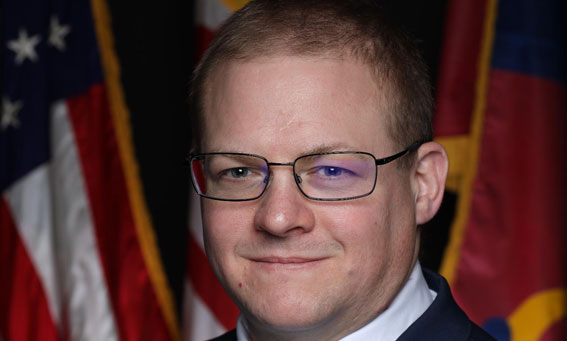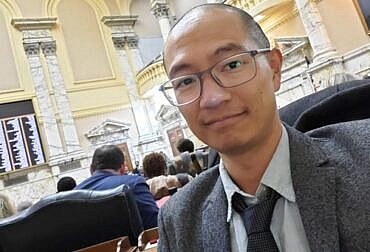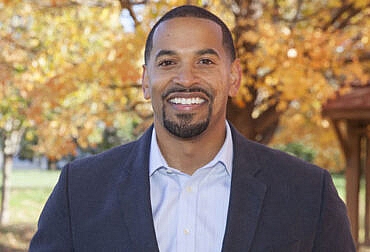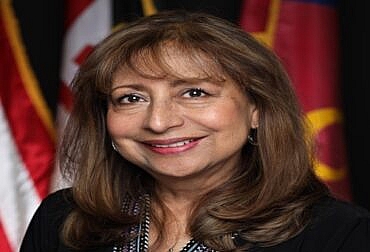Nagender Madavaram discussed with Assistant Chief Administrative Officer, Dr. Earl Stoddard about his role during Covid. Dr. Stoddard received his doctorate in cell and molecular biology from University of Pennsylvania, who has been a key figure during the County’s response to the COVID-19 efforts. He has served as the Director of the Montgomery County Office of Emergency Management & Homeland Security (OEMHS) since January 2016. In this capacity, he has overseen the County’s emergency preparedness, mitigation, response, recovery, and prevention programs. Previously, Dr. Stoddard served as the program administrator for Public Health Emergency Preparedness and Response (PHEPR) within the Montgomery County Department of Health and Human Services (DHHS) from 2014 to 2015. This is the second of a 2-part transcript of the interview which covered the topics of emergency management and County grants.
Emergency Management:
Nagender Madavaram: Emergency Management Department may not be ready to deal with the unexpected disastrous pandemic but it met the challenges under your leadership. What lessons you can share with the residents?
Earl Stoddard: So, we could speak for hours on what we’ve learned from COVID-19. I think we’ve done a very good job in a lot of places, but the emergency manager, he always looks at what we did and says there’s so many things we could do better. I mean, I’ll talk first momentarily about what we did really well with partnerships, you can’t accomplish anything on your own. So, very early, we established really strong relationships with volunteer organizations. Our Health and Human Services Department obviously did a ton, and frankly did more than they should have been expected to do. Very early we recognized that they weren’t going to be able to do it alone. So, we got engaged with Emergency Management and other organizations. We got our Department of General Services to manage the pandemic stockpile, the PPE, and other supplies in a lot of pain. We had connections with our Department of Transportation they were providing not just bus service in public, but they were also doing transportation to our testing and vaccination clinics. We had connections with our recreation centers which provided a lot of the staffing for some of our homeless shelters as well as some of the vaccination clinics. Libraries were engaged to operate the HHS call centers for vaccinations. We had a whole of government response and that’s something I’m really proud. We didn’t wait for the pressure to push us. We did it very early. I think something in Emergency Management that was very smart. We learned on the fly how many of our communication systems relied on face-to-face contact. When you have a pandemic, people are afraid to interact with people regularly. Obviously, there’s a good reason. It’s a person-to-person transmission. We had to develop some alternate systems for communicate to the public. Communicate to our most at risk populations through multilingual way. We encountered all kinds of challenges and certainly one of the things that we’ve learned is we’ve developed a number of systems. Now we’ve got to make sure that we keep those systems after COVID so that we can communicate with those populations at all times. You know when I talk to other people who are interested in Emergency Management; number one, one of the things maybe most proud to be an emergency manager was you have to be willing to tell the truth even when the truth isn’t popular. When people aren’t going to like what you have to say, but you have to say it anyway. Meaning some people don’t like to hear bad news. Some people don’t like to hear the honest truth about how well we’re doing and how well we’re not doing it. I pride myself on being able to articulate what we were doing well and what we weren’t doing well even when it wasn’t popular here. I certainly felt like that may be more effective and maybe more trusted when I was willing to do that. I certainly think that being willing to look at the person you’re partnering with from their perspective of your interests as an emergency manager and with the interests of the Fire Chief, Police Chief or the HHS Director or the nonprofit. You have mutually beneficial outcomes in the way you respond.
County Grants:
Nagender Madavaram: I heard that you are also looking after the disbursement of grants.
Earl Stoddard: I was more involved in the COVID-19 specific grants. So first, the county is in process of creating an office of grants that will help to coordinate our grant offering opportunities. They’ll also be helpful in helping the county identify more grant opportunities to apply for itself. We’re actually in the process of creating an office of grants for that very reason to make us more effective. We’ve had a number of COVID specific grants for businesses or nonprofits through our food security program and our vaccine distribution program. We’ve been really trying to make sure that we offer a lot of the resources that we’ve received from the Federal Government. Some funds came directly to the county that we turned around and put out as grants for businesses and nonprofits and other partners to allow them to build capacity to be more effective. In the case of the businesses, we knew that the pandemic was crushing so many of our businesses. Frankly, we knew that by closing down these certain businesses or limiting capacity in other ways, we are hurting those businesses. We felt an obligation to try and return some of the lost revenue to them in the form of grants. We were very heavily involved in creating opportunities for our residents and businesses. We wanted to make sure that the reopening was safe, so we offered additional grant opportunities. We aim to have restaurants be able to operate more outdoors or to have better ventilation or filtration. Make their spaces safer and so obviously at every step of the way we were really trying to provide resources to our community. That allowed them to be more effective and safer partners
Nagender Madavaram: Let us hope pandemic may disappear in 2022. The regular grants department may come up. What role you play in processing the grants?
Earl Stoddard: I don’t know exactly where they’re going to be placed. I’m not sure they’re going to be in my portfolio. We’re in the process of building that out. I would actually probably suspect it’ll be under Deputy Chief Administrative Officer portfolio. Having been in accounting department to receive, I mean much of the funding for the Office of Emergency Management was grant based. We would receive grants we would actually click grants out for our faith community as well. I think it’s going to be a welcome addition to the county to have a more centralized place that organizations can come to understand what kind of grants they’re eligible. The county puts out a ton of grants. It also receives a ton of grants and then obviously some of those grants that we received flow to our community. The Office of Grants, going to be really effective in centralizing the opportunities and providing subject matter expertise to organizations that are trying to apply for grants and also share our expertise to the County itself. I have been trying to advocate for more grant dollars. I will tell you the other side, some of the grants come from federal agency with very specific requirements. You need sort of distinct expertise to be effective at perceiving or applying for those grants. So, I still think there will be plenty of room within specific departments for that expertise to exist by having a centralized office of grants. An umbrella organization helps to coordinate the specific grant applying apparatus within the individual departments. The other thing is there are a lot of grants that are more effectively applied for if they are multidisciplinary, and I think the Office of Grants will be really effective in helping the county and helping organizations to apply for grants. A single department might not have this multidisciplinary expertise to help them.
I don’t think the county applies for all the grants that it could receive and then give to community members. Nor do I think we do a great job as a county in all cases, with making people aware of all the opportunities that the county offers. Having worked with a number of nonprofits, I know, nonprofits don’t have a ton of staff to be looking for grant opportunities, spending a lot of time applying for different grants. You know, all those things, and then administering the grants can be burdensome on the back end depending on the requirements to do so. So, I think one of the roles of the Office of Grants is going to hopefully to provide technical assistance and information to grants applicants about the opportunities that might be available to them. I think we’re looking to have central applications process, so you’re not redundantly entering the same information in different programs over and over again. I think there are ways for us to streamline and make it simpler for organizations to apply for a bunch of different kinds of grants. So obviously some organizations may qualify for many types of grants. Allow them easily to apply and also to maintain whatever portfolio grants that they receive. So, it’s not as much overhead for them to receive a grant. I know there’s a lot of organizations that don’t even apply for the grants because the time it takes to get the grant and then the time it takes to manage the grant. If the grant isn’t big enough to justify, then they just don’t even apply. We get less applications in some cases, and so that’s a big part of why the Council and the Executive agreed to establish Office of Grants together to try and streamline that process for nonprofits and community organizations.











